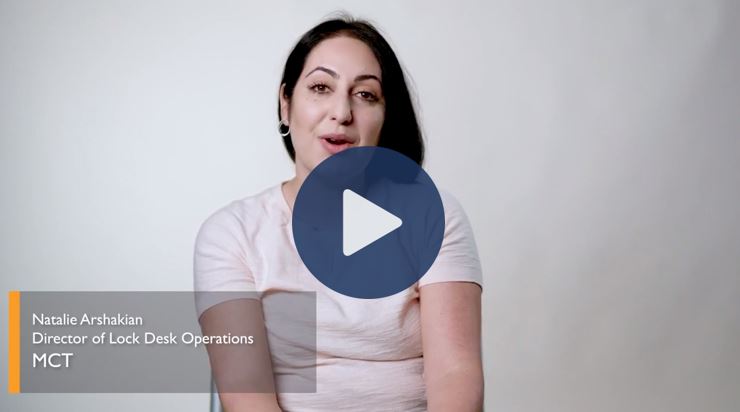The goal for any successful lender is to maximize execution in the secondary market, this article will give you the history of how far best execution for mortgages has come to today.
The use of loan trading platforms has made significant increases in productivity and profitability. They can now very well be the differentiator for a lender’s success in capital markets. Without tools and automation, you are falling behind competitors and adding unnecessary risk to your portfolio.

Today, loan trading platforms dominate the secondary marketing space and allow staff to achieve their best execution while reducing risk for the company.
In this detailed article, we’ll discuss the history of best execution in mortgages, how the digitization of whole loan trading benefits us now, and what future trends can be expected with best execution.
Table of Contents – Best Execution in Mortgage Loans
- History: How Digitization Has Revolutionized Loan Trading
- 2017 to Present: Platforms Increase Lender Profits
- The Future of Best Execution and Mortgage Loans
History: How Digitization has Revolutionized Loan Trading
The advent of loan trading platforms over the last decade has revolutionized the secondary market by sloughing off hours of time in process efficiencies while increasing clarity and visibility for lenders to make pricing and delivery decisions.
By highlighting the process before and after whole loan trading platforms were introduced to the secondary market, you will see how drastically this software continues to improve the day-to-day operations of lenders.
Before One-click Distribution, Collection & Analysis of Bid Tapes
Before loan trading platforms (or for those not yet using them), the process was (is) manual and tedious.
Lenders would have to pull a bid tape together, with all the loans to sell and the associated characteristics of each file on a Microsoft Excel spreadsheet, send it out to investors, then pull it back via email, usually on another attached Excel spreadsheet, with no way to see or compare loans in a true best execution without manipulating them.

They would then analyze the bids manually and decide which loan should go where, send out confirmations and update the systems of record keeping. Each investor would ask for different spreadsheet formats and little was standardized. Each step of the process left room for manual error and took much more time than today’s methods. Put another way, it was cumbersome and time-consuming.
Before Rapid Market-Adjusted Pricing
By reviewing the antiquated process above, it’s easy to see that bid prices could easily move during the time it takes the staff to assimilate data, rendering the assimilation exercise useless and in fact costing the lender money if the market is moving in the wrong direction.
Fortunately, the quick turnarounds now reduce this challenge, and bids also may include market-level adjustments.
Regardless of methodology, the prices of individual loans are a function of where they can be sold. Sometimes this is investor-specific. Lenders would take the security price, and add in the g-fee, servicing value, and pass on any specified pool payups, doing everything internally and manually.
Entire tapes of loans were bid by investors on weighted average price, and loans were sold as pools rather than individually, hurting pickup.
Secondary marketing staff would take out positions to cover pipeline and do TBA trades, maintain Excel models, make sure they were accurate, and the links to Bloomberg or the TBA screen kept current, as the model could be fed incorrect data.
Reports would be done via manual upload maybe twice a day when every hour the position could be fluctuating. Data was assumed to be correct, and errors often went overlooked or weren’t caught until well after the loan package was shipped.
Before Valuable New Investors Were Identified with Shadow Bidding
Before best execution on trading platforms, capital markets traders thought it was not worth sending bid tapes to supposed non-competitive investors individually over email. Copying the bid prices into a master Excel sheet and eyeballing them to see which investor had the winning rate, used to take all day long.
Now, using a loan trading platform, bid tapes are easily sent to 20 or more investors, and pricing analysis can be done rapidly. An often-overlooked benefit of the new technology is the large pickup from individual loan commitments with investors that are normally shied away from due to a historic lack of business.
By sending pricing to multiple investors, it provides additional clarity into when a lender is priced better or worse throughout the month.
The granularity within the asset began accelerating, however…
Lenders, led by MCT Marketplace’s technology, became better at providing accurate and detailed data points and investors became better at assimilating all these data points into sharper pricing. Loan level bids became the norm, and lenders enjoyed the pickup they got by piecing out the cake, so to speak.
The bid tape was originally an evolution of other loan sale delivery methods, but as the origination process has moved towards a streamlined product, increasing digitization, loan trading platforms and live pricing have truly changed secondary markets. Additionally, there was also need for more security in bid tapes and to move away from emails.
2017 to Present: Trading Platforms Increase Lender Profits
In 2015, MCT saw a need to develop a technology solution that helped their traders work more easily with their lender clients and effortlessly exchange bulk bid tapes with investors. Thus, MCT Marketplace was created.
MCT Marketplace was a first of its kind technology, adding significant value to lenders and investors and establishing newfound efficiencies for bid tape AOT executions to allow lenders to fully capitalize on mandatory to best efforts spread.

By October 2017, MCT Marketplace had achieved 100% investor adoption with investors citing MCT Marketplace as the most robust, easy-to-use, scalable, and secure bid tape management technology on the market. In April 2018, PROGRESS in Lending Association, the industry’s premier mortgage technology-focused organization, presented MCT with its Annual Innovation Award for the rapid adoption and impact of its MCT Marketplace.
Then, in August 2018, MCT released a first-of-its-kind technology to automate the Tri-Party Agreement required between lenders, investors, and broker-dealers during AOT transactions in the secondary market. MCT Marketplace continues to set the tone for the future of loan sales, continuing with innovations that will better serve the entire secondary market.
“MCT Marketplace is truly industry-altering fintech that has changed the way loans are exchanged between lenders and investors,” said Phil Rasori, COO at MCT and Chief Architect of MCT Marketplace. “As we continue to add functionality and make the solution more robust, ultimately, what MCT Marketplace is achieving is helping move the mortgage industry toward completely digital loan trading on the secondary market.”
For those not harnessing the technology of a trading platform, whole loan trading has become exponentially harder, or less profitable.
Lenders not taking advantage of all the delivery methods available are likely leaving some profit on the table.
For example, lenders with Fannie and/or Freddie approvals that take out an open position and fill it along the way aren’t going to realize value in the mandatory spread, nor is the process scalable with more volume as it is time-consuming.
The Future of Best Execution in Loan Trading
After the huge shift to bid tape execution which brought granularity of pricing, and the digitizing of the secondary markets taking place in the present that MCT was instrumental in rolling out, where do secondary markets evolve from here?
Thoughts around the industry vary, but there are some common themes:
- The vertical structure will become much more consolidated and there will be process coverage from beginning to end of the pipeline.
- Another possibility is moving toward a stock exchange level of shared adoption in the format and process for trading, possibly through blockchain. Or an eBay-style application that provides a format with search criteria for buyers and tools for sellers.
- Others believe the bulk bid process will evolve to so lenders won’t wait to stack up a bulk set of loans before bidding them but will instead be listed for bid as soon as they enter the pipeline, allowing buyers to sort and filter for criteria they are looking for and engender transparent nonconforming markets.
- Many believe the digitization of the loan process will move the pricing and knowledge about spec payups to the point of origination, reducing the need for a traditional rate sheet.
- Finally, pricing granularity is constantly advancing, and one example we could see in the future would be pricing by MSA rather than by state.
Secondary markets continue to evolve and technology is at the forefront of this evolution.
To find extra profitability in this market, you must embrace technology and prepare for an automated future. It is more effective, less prone to errors, and with the right guidance, can significantly increase your bottom line. We hope you will reach out and learn more about digitalization strategies in loan sales.
Get Ahead of the Competition with MCT Marketplace
No more hours spent sending, receiving, organizing, normalizing, and reviewing bid tapes from a myriad of investors via unsecure emails every time you do a loan sale.
MCT Marketplace saves time and improves margins, whether you use it to streamline your bid tape management or take advantage of robust Best Execution analysis.
Contact MCT for a Demo of MCT Marketplace!
Lenders seeking to learn more can view the following related articles:
- Case Study: Mountain West Financial Increases Efficiency & Improves Margins with MCTlive!
- Case Study: Eustis Mortgage Upgrades Loan Sales Process with MCT Marketplace
- MCT Marketplace Webinar
- New Bid Tape AOT Executions Explained (Webinar Recap)
- MCT Whitepaper: 15 Strategies for Lenders to Improve Profitability




